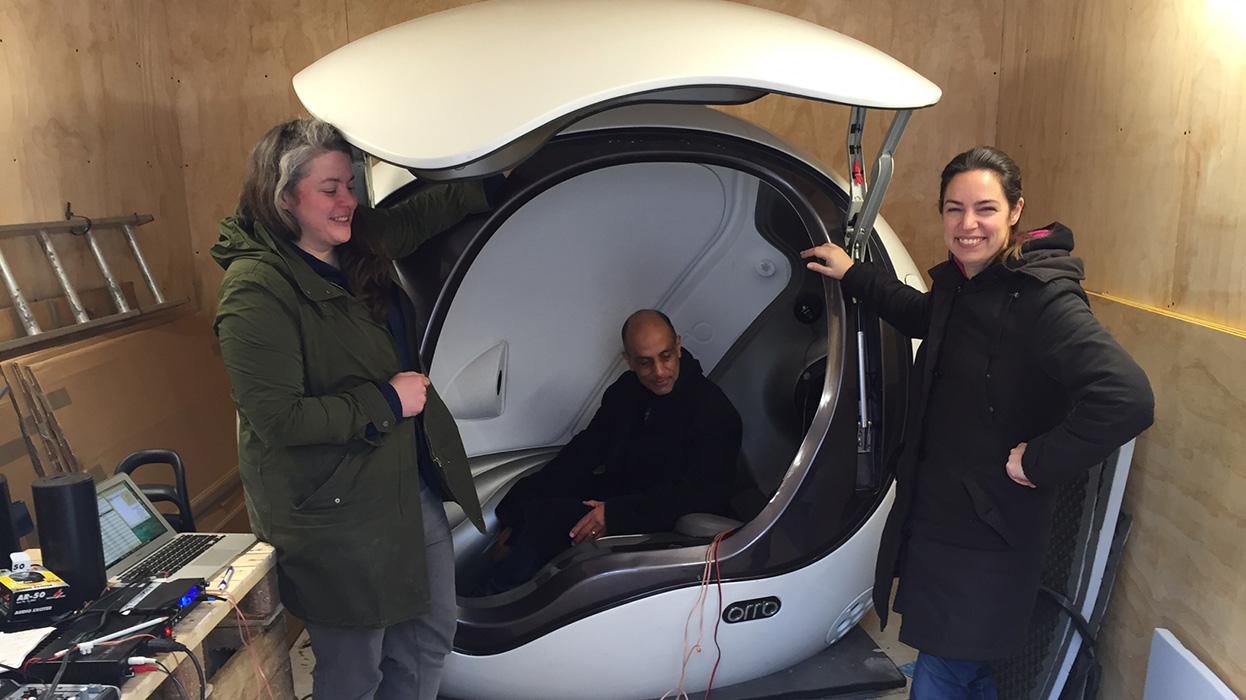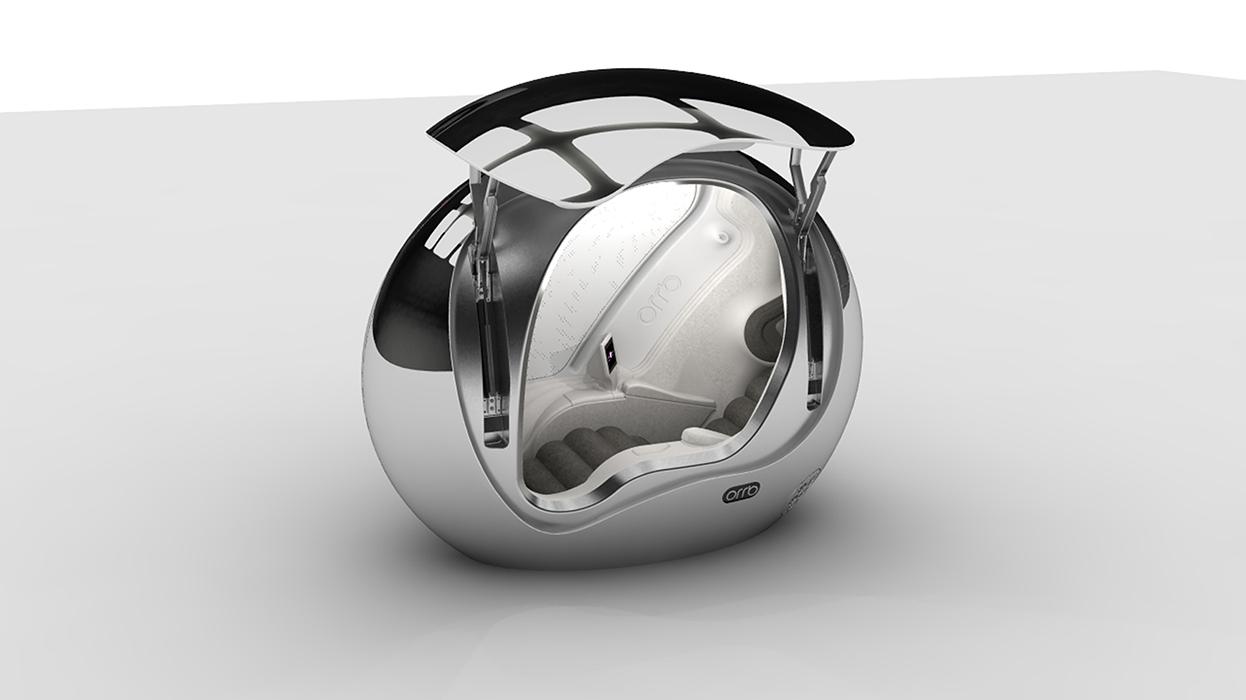‘Womb pod’ recreates in utero sound experience
Primary page content
A Goldsmiths, University of London sound artist has teamed up with an obstetrician to create an immersive pod that recreates the sounds we experience as a developing fetus. The Sonic Womb debuts at The Brain Forum in Switzerland on May 26.

Aurelie Mermod, Professor Julian Henriques and Aude Thibaut with the Sonic Womb Orrb in the Goldsmiths workshop
The Sonic Womb is the creation of sound artist and leading topology researcher Professor Julian Henriques (Goldsmiths, Department of Media and Communications) and Professor Eric Jauniaux, an internationally known fetal medicine specialist at the Institute for Women’s Health at UCL.
Their scientifically accurate ‘fetal filter’ sound system has been installed in a 2m long and 1.7m high capsule called the Orrb. Designed by Goldsmiths Department of Design alumnus Lee McCormack and his team of engineers, the Orrb was originally created as a ‘wellness and learning pod’ for the workplace. It will launch toward the end of this year.
Inside the Orrb, the listener hears the world as if they were a fetus in utero, through the skull and entire body, not the ears. Some frequencies are dampened, others amplified. The mother’s digestion and heartbeat are clearly audible. A lullaby sung in the mother’s voice as transmitted down her spinal column is a highlight of the experience.
Developing in utero at 24 weeks, hearing is our first means of perception and the main sense connecting the fetus to the outside world. But the sound environment of the womb is not well understood, which has important clinical and societal implications.
How, for example, can womb-like conditions be created for premature babies in incubators if those conditions are not fully known? How can mothers-to-be make informed choices about activities when they’re not sure what type of noise and at what levels their unborn child can safely be exposed to?
After meeting to discuss a question that many parents-to-be ask during pregnancy - “What does a fetus hear in utero?” – Professor Henriques and Professor Jauniaux created a unique sound environment capable of transporting listeners to a place they explain is a “long forgotten place we’ve all come from".
Joined by Aude Thibaut an entrepreneur and a mother of now thriving but prematurely born twins, they reviewed the most up-to-date academic research, conducted their own experiments, and worked with state-of-the-art audio engineering to recreate the experience of hearing in utero in an acoustically optimised enclosed space.
Aurelie Mermod, of the University of the Arts Zurich, conceived the special sound diffusion system inside the Orrb. Dan Scott, of University of the Arts London, developed the fetal filter and soundtrack.
On May 26-27 at the W Science Brain Forum in Lausanne for the first time the Sonic Womb Orrb listening experience will be offered to an audience of neurologists and to the public, courtesy of Zurich-based R&D investor W Science, who provided Sonic Womb Productions Limited with the Orrb.
Professor Henriques comments: “Sound has a more critical affect on our lives than most people realise. We hope experiencing the Sonic Womb will encourage research to prevent auditory stress for premature babies - by improving the acoustic properties of the neo-natal incubator.”
Professor Julian Henriques is Director of the Toplogy Research Unit at Goldsmiths, joint head of the Department of Media and Communications, and co-founder of Sonic Womb Productions Limited – a company researching and creating soundtracks for education, relaxation and therapy.
Find out more about The Sonic Womb, The Brain Forum 2016, Orrb, and the Topology Research Unit at Goldsmiths.
Read more on motherboard.vice.com

Orrb, designed by Goldsmiths Design graduate Lee McCormack. Visit orrb.com for more information.